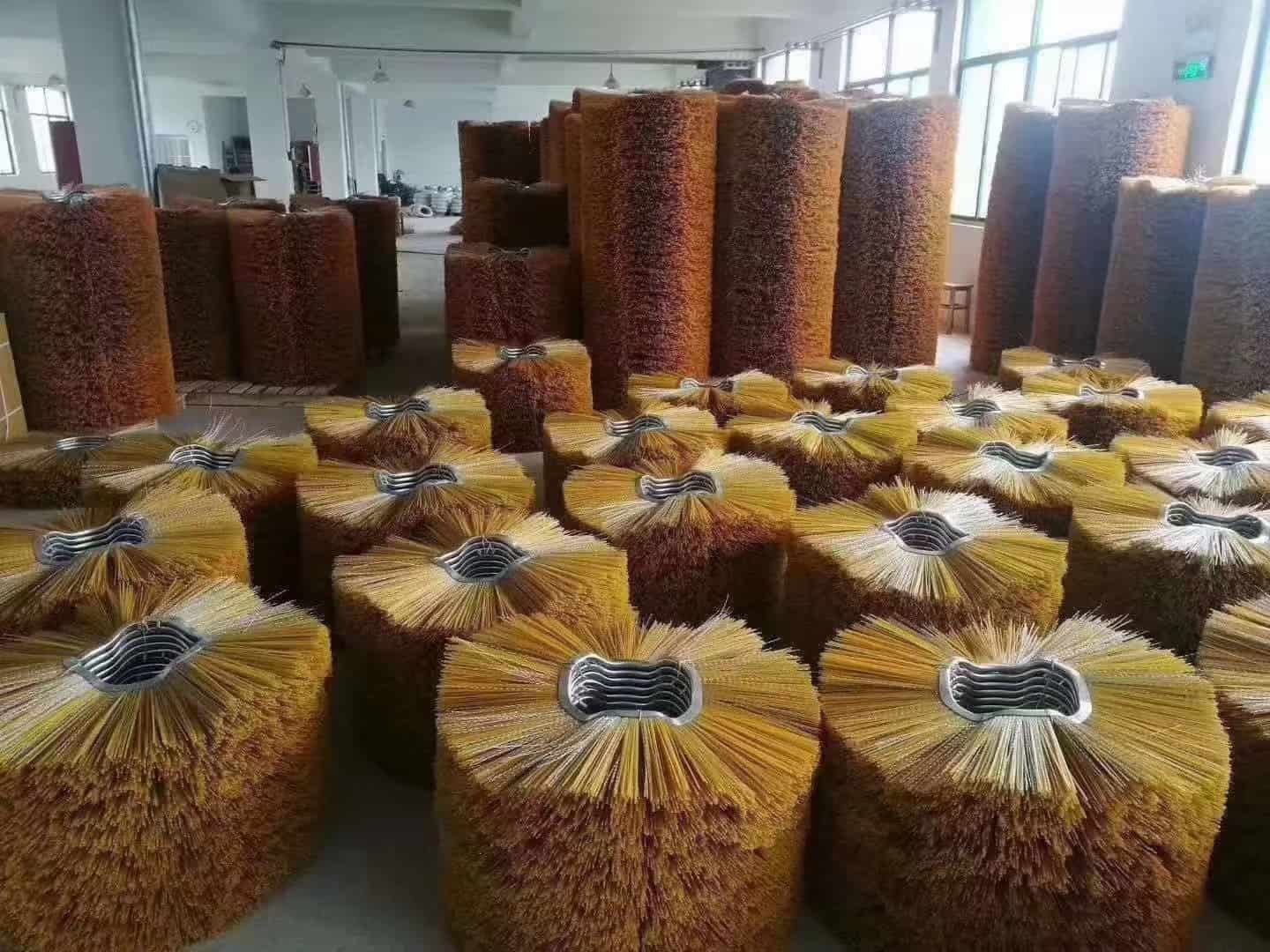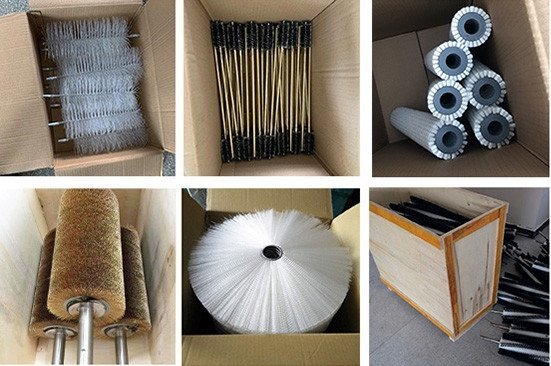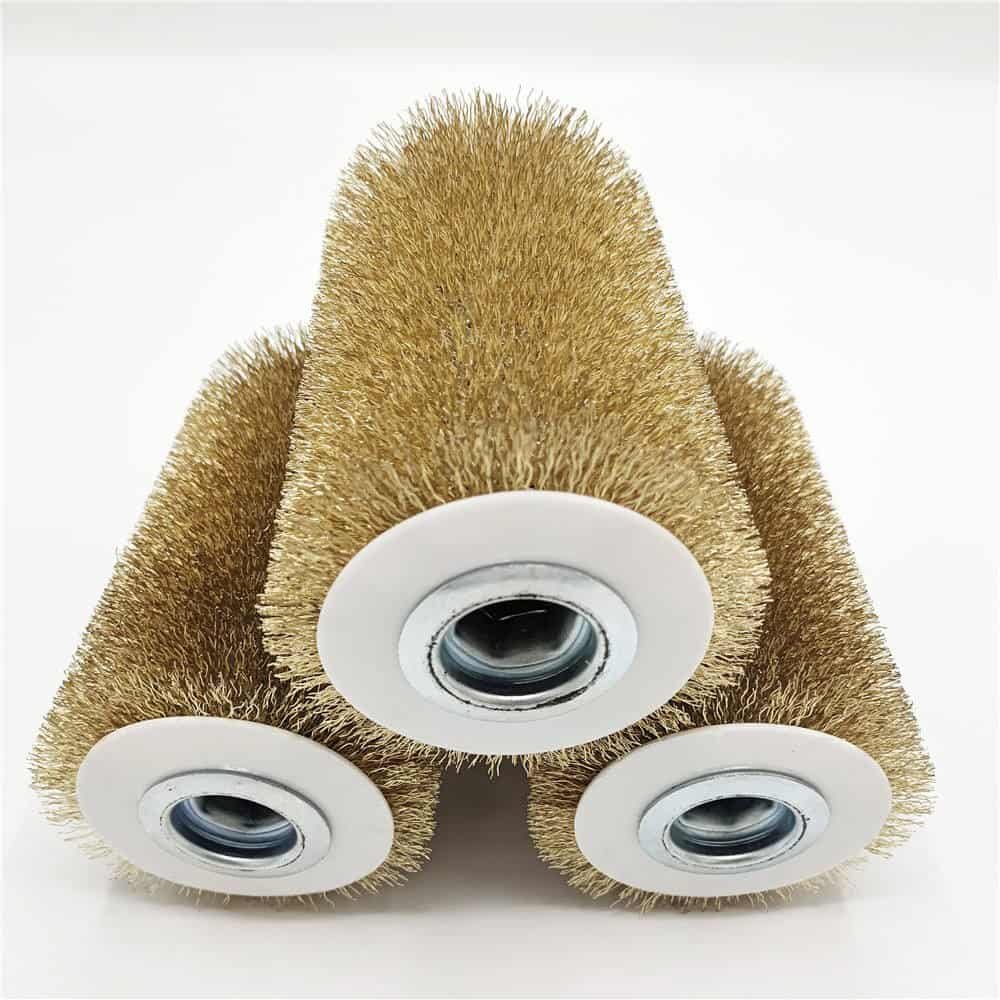Choosing the right wire brush is crucial for success. Wire brushes are pivotal in various applications, from cleaning and deburring to surface preparation, painting, and welding. The correct choice can enhance efficiency and output quality, while a poor choice can damage surfaces and increase costs. Understanding how to select the right wire brush is a must-have skill for professionals in these fields.
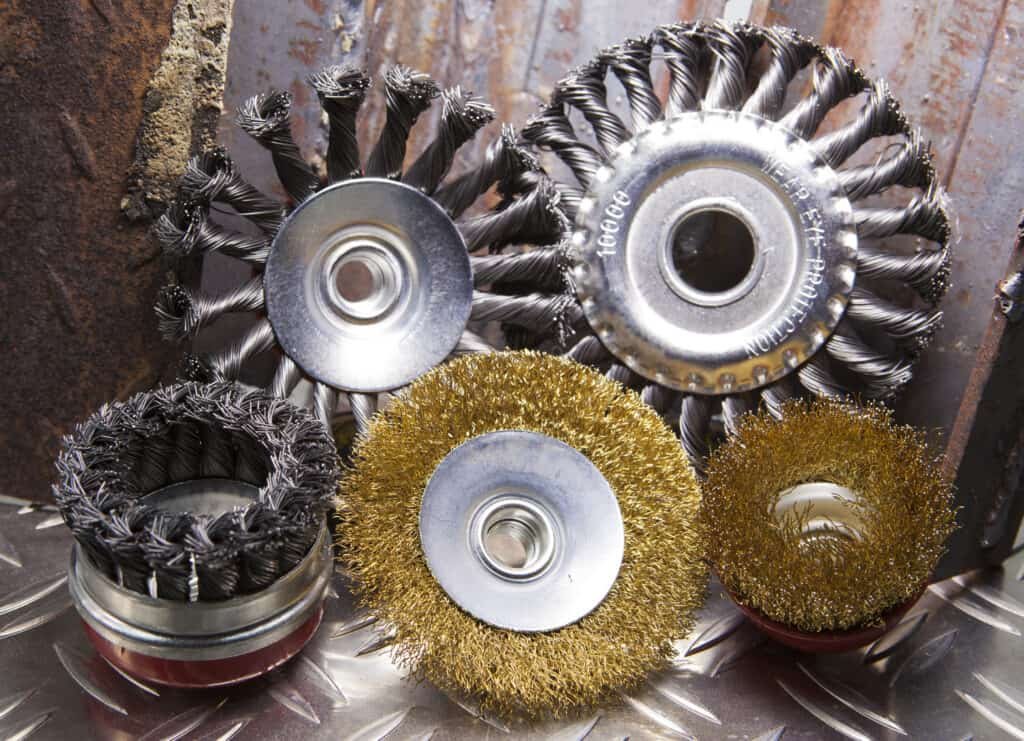
Wire brushes are used in a broad range of industries and tasks. In welding, they clean and prepare surfaces and remove slag. They strip old paint and prepare surfaces for a fresh coat. In the automotive sector, they clean rust, remove gaskets, and clean engine parts. In metal fabrication, they deburr metal parts. They clean and maintain machinery, tools, and equipment in maintenance and repair. Each application requires a wire brush with specific features for optimal performance.
Understanding Wire Brushes
A wire brush is a versatile tool used for cleaning and preparation tasks. It has a handle and bristles made from steel, brass, or stainless steel wires. Wire brushes are commonly found in professional and DIY toolkits, and they are essential in various industries, such as welding, painting, metal fabrication, automotive work, and general maintenance and repair.
They effectively remove rust, paint, and other contaminants from metal, wood, and concrete surfaces, ensuring strong and durable results. The right wire brush selection is crucial for task efficiency and quality.
Types of Wire Brushes
Several types of wire brushes are available, each serving a distinct purpose and suitable for different applications.
- Cup Brushes: These brushes feature bristles forming a cup-like shape and are most commonly used for cleaning large, flat, open, or curved surfaces. Cup brushes are designed to be attached to an angle grinder or drill, providing high-speed rotational cleaning action. They are ideal for removing rust and paint, cleaning larger metal surfaces, and deburring.
- Wheel Brushes: Wheel brushes get their name from their wheel-like shape. These brushes are used for cleaning, polishing, and deburring applications in relatively hard-to-reach areas. They provide uniform brushing and are often used with bench grinders or handheld power tools.
- End Brushes: End brushes are designed for work where space is limited. They are typically used in die grinders and power drills. Their shape allows them to get into small areas for cleaning, deburring, or polishing tasks. They are perfect for precision work in tight, confined spaces.
- Tube Brushes: Tube brushes, also known as internal brushes, are designed to clean the inside of pipes, tubes, and other cylindrical objects. They come in various diameters to fit different pipe sizes. They are frequently used for internal cleaning tasks in plumbing, automotive, and industrial applications.
Factors to Consider When Selecting a Wire Brush
Wire brushes are constructed with bristles of different materials, each offering unique properties to suit specific applications.
- Steel Wire Brushes: Steel wire brushes are known for their durability and aggressive cleaning capability. They are typically used for heavy-duty tasks such as rust and paint removal, weld cleaning, and deburring. However, they can be too harsh for softer materials and cause scratching or surface damage.
- Stainless Steel Wire Brushes: These are corrosion-resistant and ideal for applications involving non-ferrous materials, stainless steel, or other hardened steel. Stainless steel wire brushes are often used in environments where contamination is a concern, as they are less likely to leave behind particles that can lead to rust or other corrosion.
- Brass Wire Brushes: Brass wire brushes are softer than their steel and stainless steel counterparts, making them a safe choice for delicate or sensitive surfaces that harder wires could damage. Commonly used on softer, non-ferrous metals, these brushes are highly resistant to sparking; hence, they are perfect for potentially flammable environments.
Choosing the correct wire thickness is another crucial factor when selecting a wire brush. The thickness of the wire used in the brush impacts its aggressiveness, flexibility, and suitability for different tasks.
- Coarse Wires: Coarse wire brushes are designed for heavy-duty tasks. The thickness of these wires offers superior abrasion. It is typically used for removing rust, heavy paint, or scale. However, they can be too aggressive for some applications and potentially cause unwanted surface damage.
- Medium Wires: Medium wire brushes strike a balance between aggressiveness and delicacy. They offer good flexibility and are less likely to mar surfaces. Medium wires are best suited for general-purpose cleaning on materials that can withstand moderate abrasion.
- Fine Wires: Fine wire brushes are ideal for delicate, precision tasks. They are commonly used for light cleaning, polishing, and surface finishing. The fine wires provide the least aggressive action. They are less likely to cause surface damage, making them suitable for softer or more sensitive materials.
Applications of Wire Brushes
A wire brush is instrumental in many industries due to its versatility. The following are some primary applications of wire brushes:
Surface Preparation
Before applying paint sealant or performing a welding operation, surfaces need to be devoid of any contamination. With its strong bristles, a wire brush effectively removes dirt, grime, and other foreign objects, preparing the surface for the next step in the process.
Deburring
After machining operations, parts often have sharp edges or protrusions, known as burrs, which must be removed to ensure safety and maintain the quality of the assembly. Wire brushes are extensively used for this purpose, smoothing the surface without causing significant material removal.
Cleaning Rust and Paint
Rust and old paint can compromise the integrity and aesthetics of a metal object. Wire brushes, especially those with coarse wires, are highly efficient in removing such substances, restoring the surface to a clean and usable state.
Weld Cleaning
Post-welding, it is common to find slag or spatter on the weld bead. A wire brush can effectively remove these, ensuring a clean and strong weld. Stainless steel wire brushes are often used on stainless steel welds to prevent contamination.
Each of these applications requires careful selection of the wire brush type and wire material tailored to the specific requirements of the task.
Brush Configuration
There are different configurations of wire brushes that are suitable for various applications. Here, we will delve into two primary types – Crimped Wire and Knotted or Twisted Wire.
Crimped Wire Brushes

Crimped wire brushes are designed with wires bent or ‘crimped’ at their midpoint, allowing for flexibility and a more gentle brushing action than other configurations. These brushes are excellent for light-duty applications such as removing scale, rust, paint, and deburring and polishing. The crimping process makes the wireless aggressive and reduces wire fatigue, which can extend the life of the brush.
Knotted or Twisted Wire Brushes
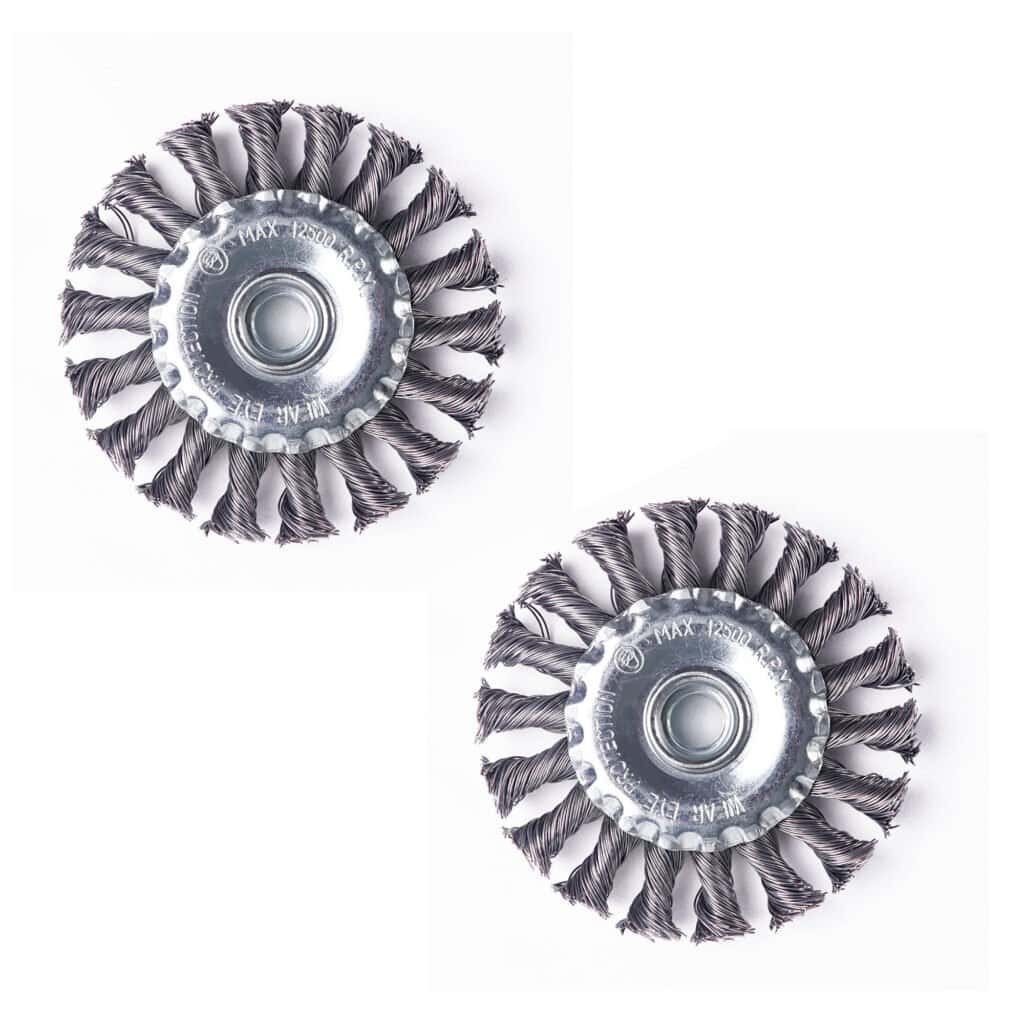
Unlike crimped wire brushes, knotted or twisted wire brushes are intended for heavy-duty applications. They are created by twisting wire strands into tight spirals, significantly strengthening the brush. This design allows for aggressive cutting and is well-suited for harsh surface conditioning, heavy rust, and thick-scale removal tasks. The knotted or twisted configuration enhances brush life and keeps the shape longer under strenuous conditions.
Safety Precautions When Using Wire Brushes
The significance of safety while using wire brushes cannot be overstated. While immensely helpful, these tools can also pose risks if not used correctly. Below are some safety measures that should be observed to protect oneself when using wire brushes:
Safety Gear to Use
- Safety Glasses or Goggles: These are necessary to protect the eyes from potential wire breakage or material particles flying off during brushing.
- Gloves: High-quality, puncture-resistant gloves should be worn to safeguard hands from possible slips or wire pricks.
- Dust Masks or Respirators: These are essential to prevent inhaling dust or tiny particles that may be dislodged during brushing.
Safe Handling and Use Practices
- Inspection: Before use, always check the wire brush for any signs of damage or excessive wear. Do not use a damaged brush.
- Proper Grip and Handling: Ensure a firm but comfortable grip on the brush, and always brush away from yourself to prevent injury due to wire kickback.
- Tool Speed: If using a powered brush, do not exceed the recommended speed, as it may cause the wires to break and become projectiles.
- Safe Storage: After use, store the brushes in a safe location that is not hazardous to others.
These safety measures ensure a productive work environment and greatly reduce the likelihood of accidents. Remember, no matter what kind of work you do, you should never compromise safety.
Maintenance and Care of Wire Brushes
Like any tool, the longevity and performance of wire brushes greatly depend on the care and maintenance they receive.
- Proper Storage of Wire Brushes: Store your brushes in a clean, dry environment to prevent rust formation. Brushes should be kept in a way that doesn’t crush the bristles; this can be achieved by hanging them or placing them flat in a drawer. Avoid dropping or throwing the brushes, which may cause bristle damage or loss.
- Cleaning and Maintenance Tips: After use, remove any residual material caught in the bristles with a gloved hand or a clean rag. Regularly inspect the brushes for damaged or worn bristles and replace them. Never use a wire brush on a power tool if the bristles are heavily worn or damaged.
- Signs of Wear and When to Replace: Over time and with frequent use, wire brushes may show signs of wear, such as bent, broken, or missing bristles or a worn-out handle. If the brush no longer performs efficiently or if it’s causing surface damage due to worn-out wires, it’s time to replace it.
Proper maintenance and timely replacement make your tool more effective and enhance safety during use.
How to buy or customize wire brushes?
When it comes to purchasing or customizing wire brushes, there are various options available. One common approach is buying off-the-shelf products from tool stores or online retailers like Amazon, eBay, and Alibaba. However, this method may only sometimes meet your specific needs.
For those who require a more tailored solution, customizing wire brushes is an option. This involves specifying wire type, thickness, brush shape, and handle materials. Customization allows for a wire brush perfectly suited to your application, ensuring optimal performance.
Brushcustom company specializes in providing customized wire brush solutions to your exact requirements. With experience in serving various industries, we understand your needs and deliver high-quality products. Our team works closely with you from design consultation to production.
Contact us with your specifications to begin the process, and we will provide a quote. We take care of the rest upon approval, ensuring a seamless experience. We are committed to providing solutions that contribute to the success of your projects.
Conclusion
Wire brushes are versatile tools with various applications, from light cleaning to heavy rust and scale removal. Understanding their types and uses, prioritizing safety, and proper maintenance maximize their lifespan and effectiveness. Customizing your wire brush can be a game-changer, tailoring performance to your needs.
Our factory offers bespoke wire brush solutions aligning with your requirements, combining industry experience and quality. Contact Brushcustom with your specifications, and our team will guide you from design to production. Reach out today for our custom wire brush solutions that contribute to your project’s success.

